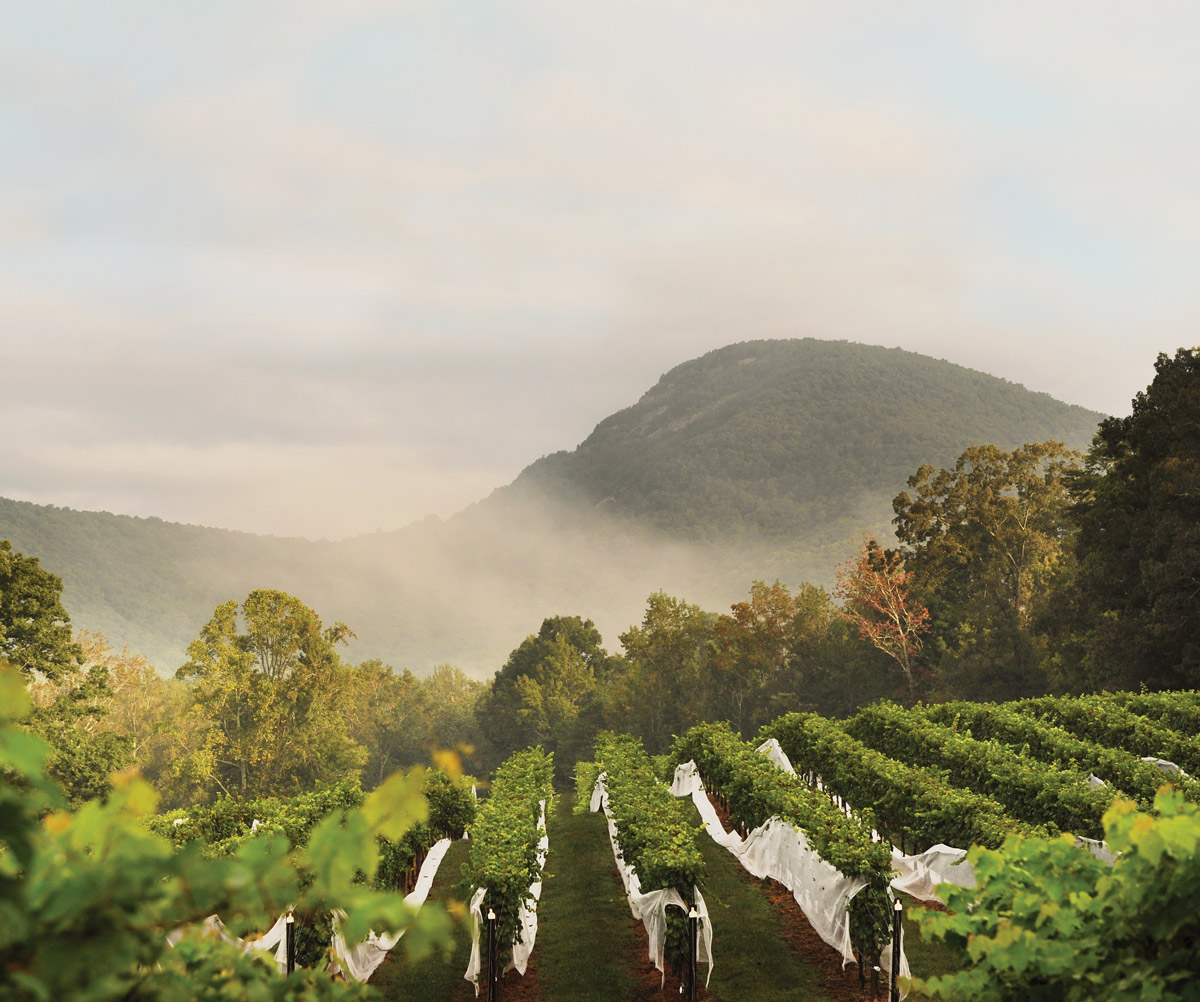
Photograph courtesy of Yonah Mountain Vineyards
Sure, you’ll still see muscadines and slushie machines, but visit North Georgia now and you’ll find sophisticated small-batch varietals you’ll never spy at Total Wine.
Wolf Mountain Vineyards has won more than 200 medals in major U.S. competitions and produced the first Georgia wine served at the James Beard House. Open terraces like those at Yonah Mountain Vineyards or Tiger Mountain Vineyards offer scenic hillside views, while Kaya currently allows guests to spread out across all 90 acres—plus cottages to bunk up in.
In 2018, the Dahlonega Plateau—a swath of the state’s Appalachian foothills with soil similar to Italy’s Piedmont—was designated the newest viticultural area in the U.S. To earn the appellation, 85 percent of a wine’s grapes must have been locally grown, making the region a fun place to discover new varietals like Touriga Nacional, Tannat, and Norton. Georgia wineries also are experimenting with California grapes, putting their own spin on familiar Chardonnays, Zinfandels, and Cabernet Sauvignons.
The third-generation winemakers at Chateau Meichtry, with family vintners tracing back to New York and Switzerland, offer 18 different wines for tasting. Some, like the 2017 George’s Cuvée (90 percent Norton and 10 percent Noiret), are estate grown, while others, such as a Burgundian-style Chardonnay and a bracing Zinfandel (16.4 percent alcohol), are crafted from California grapes. However, the imported fruit is shipped whole in refrigerated trucks, minimizing sulfites. Plenty of outdoor umbrella tables and a patio bar make it easy to find ample space, and there’s a steady rotation of live music and food trucks.
At the nearby Fainting Goat Vineyards & Winery, yes, there are goats (Ronnie, Reagan, Dolley, and Mamie), and they do faint. But these mascots only pass out when they’re scared, and they’ve grown accustomed to visitors, so don’t get your hopes up. This boutique vineyard tucked into the side of Burnt Mountain offers expansive views of the surrounding hills. You’re welcome to bring your own picnic (they don’t serve food) and enjoy free sunset concerts on weekends around the terraced lawn—you can even bring your leashed dog. We recommend the Patriot, a dry red made from regional Lenoir grapes, which has hints of leather and tobacco. And it’s hard to resist a souvenir glass with an upside-down goat.

Illustration by Claire McCracken
If wine’s not your thing, head to the Etowah Meadery & the Dahlonega Brewery, which share space in a roadside facility where they raise bees, ferment local fruits and honey, brew, and pour. Bottled and on-tap sparkling meads are on offer, including fruity varieties like the Strawberry Rhubarb and Spiced Pear-Licious. High tops afford plenty of space on the shaded patio, and water bowls for your pup mean you can all take a load off after a long hike. You also can pick up a six-pack of cute cans.
Of course, it wouldn’t be a Georgia mountains story without whiskey and moonshine, given the area’s history of Prohibition-era distilling. In an old stone building in Dillard, find the R.M. Rose Distillery, a 2016 revival of a historic brand founded in Atlanta in 1867. It manufactures its own copper pot stills and cypress fermenting tanks and makes varieties seasonally with local fruit. At the young venture, aged varieties were distilled elsewhere for now, but they’ve had plenty of action in their stills. They offer tours of the tiny space, but there’s not much reason to linger in the Prohibition-style tasting room, though it’s fun to pop in and pick up a bottle of whiskey or a jar of moonshine—or even a half-gallon of hand sanitizer—straight from the source.
Back to An Insider’s Guide to the North Georgia Mountains
This article appears in our September 2020 issue.













